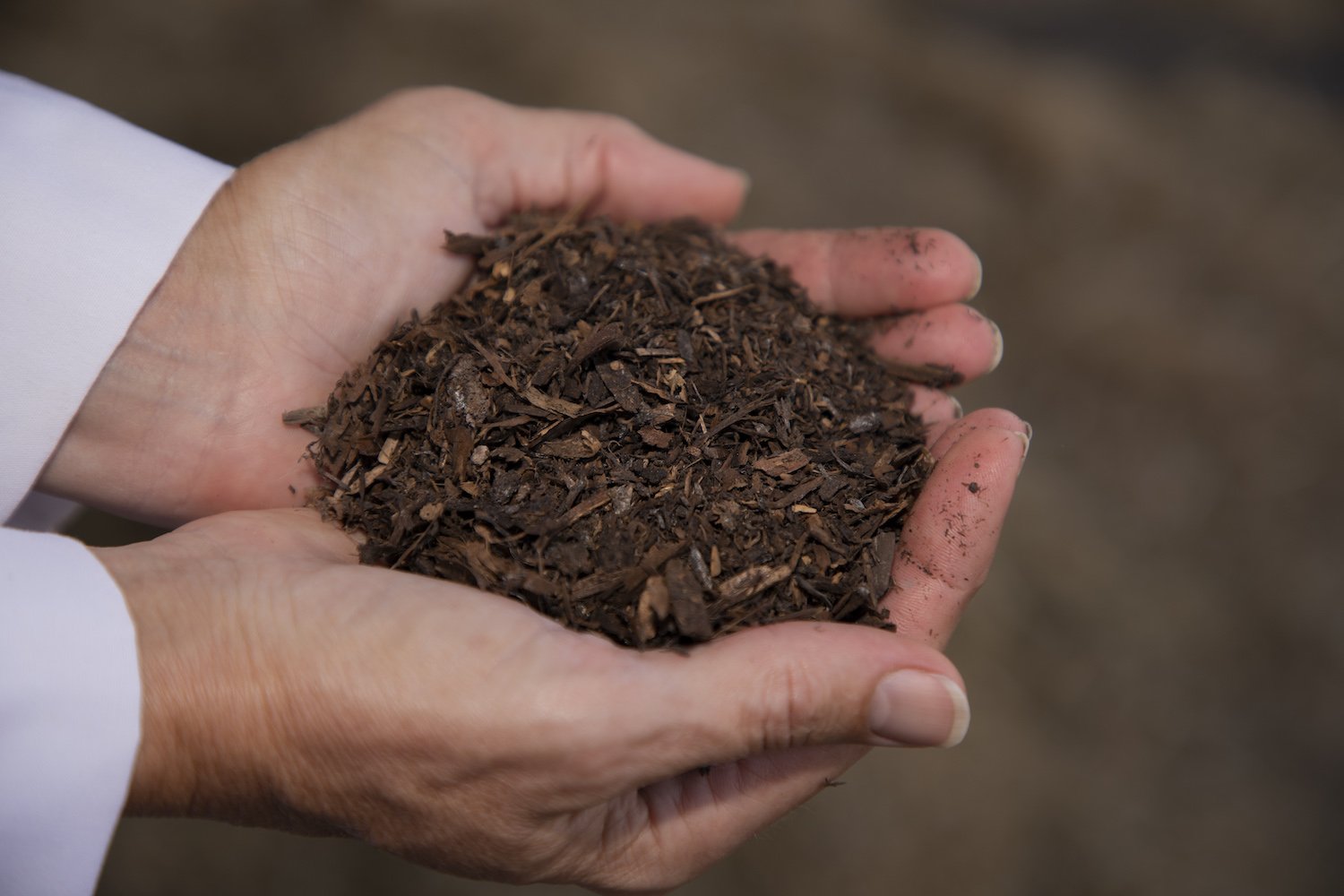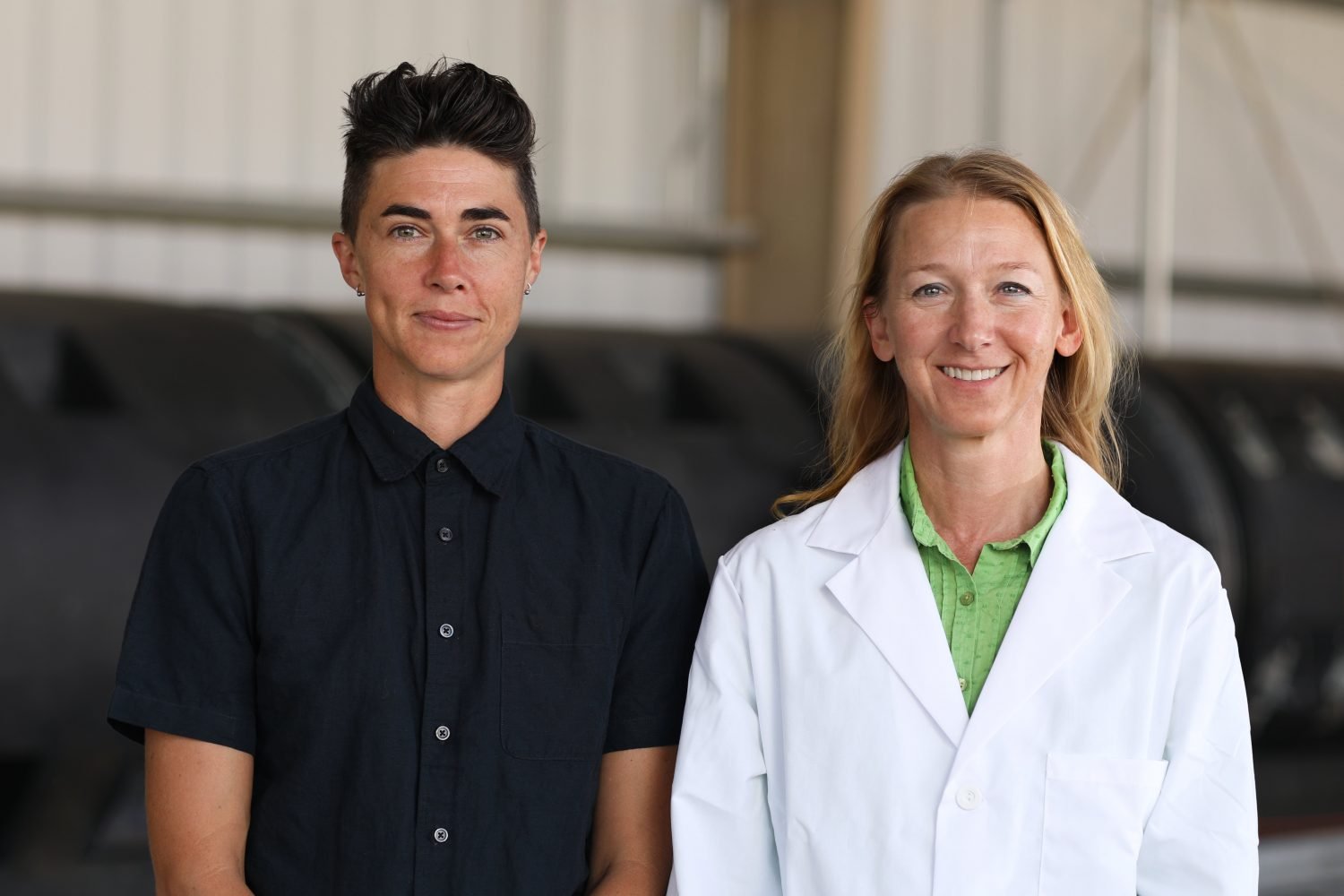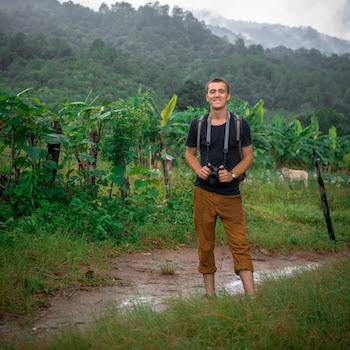Funerals of the Future: How Washington Just Legalized Human Composting

“One problem we had was the ‘ick’ factor. People have a picture in their mind of throwing uncle Edgar into the back in the food scrap pile and letting him rot, and that’s not really how it works at all.”
Jamie Pedersen is a Washington State Senator: a Democrat representing the 43rd district in Seattle, born and raised less than 50 miles away. He’s recently been in the position of explaining composting more often than most environmentalist Seattleites: specifically, a post-mortem process called “natural organic reduction,” or human composting.
In late May, Washington Governor Jay Inslee signed a bill to make the state the first place in the country, and seemingly the world, to legalize the composting of human remains. Pedersen introduced the bill and pushed it through the legislature.
“A few people think I’m the next incarnation of Adolf Hitler,” said Pedersen.
Senate Bill 5001 legalizes a process it describes as “the contained, accelerated conversion of human remains into soil.” No open-air mountaintop sky burials like in the Himalayas, no furtive mafia-esque backwoods graves.
In February, on the day of the final Senate vote, Pedersen said from the Senate floor: “I will make the claim that this bill may change the world.”
“There’s this absolutely universal experience of death and we live in a world that’s been transformed by technology and yet the only means of disposal of remains are ones that have been with us for thousands of years,” said Pedersen.
The drive behind the bill came from a new Seattle business called Recompose and its founder and CEO, Katrina Spade. Recompose is currently raising $6.75 million to open the state’s first “recomposition” facility, as the company calls it. It will also hold concerts, poetry readings, and community events, according to Spade.
“We’re aiming to provide ritual, to help people have a more direct and conscious experience,” said Spade.
Converting Humans Into Soil

Finished material after body decomposition. (Photo: WSU Communications)
In the Recompose process, each body is wrapped in a biodegradable shroud and placed in an individual, metal, hexagonal cylinder. The body is then covered in straw, wood chips, alfalfa, and other natural materials. Slowly and gently, the body is mechanically turned while being aerated with a slow stream of warm air. Endogenous microbes break the body down into soil.
Bones are not an issue.
“Femurs break down easily because of the marrow,” Lynne Carpenter-Boggs, Research Advisor at Recompose and Professor at Washington State University, told The Stranger. “The microorganisms can work both the inside and the outside. But the scapula, the pelvis — where there’s not as much marrow inside and the actual bone is thicker — can take longer.”
The microbes break down any drugs or pharmaceuticals in the body. Any pathogens are killed off as the microbes and bacteria raise the temperature in the cylinder to 120-160 degrees Fahrenheit. It’s all over within 3-7 weeks.
A body reportedly decomposes into about a cubic yard of soil, which can weigh 1000-2000 pounds. Recompose won’t require friends and family of the deceased to cart away all of this; any soil they choose to leave behind will go to conservation land in the Puget Sound region.
A Sustainable Death
“The primary drivers for me are three things: environmental impact, cost, and the whole idea of personal liberty to make these decisions,” said Pedersen.
Human composting is part of what some call the “alt-death” movement, a range of ideas for sustainable and alternative post-mortem options like nontoxic embalming and natural burial grounds, where coffins and chemicals are banned. Recompose’s website describes its work as “death care.” The company focuses on the fact that burial and cremation are unsustainable.
First, there’s the space: cities are already running out of room for burials as populations expand. Seattle has a long-standing ban on creating new cemeteries and expanding existing ones.
Second, there’s the pollution: each year, the U.S. puts 1.6 millions tons of concrete, 20 million feet of hardwood boards, and 4.3 million gallons of carcinogenic embalming fluid into the ground in conventional burials, according to the Urban Death Project. It’s enough toxic fluid to fill six-and-a-half Olympic swimming pools.
Cremation isn’t sustainable either.
Cremating a single body emits 540 pounds of carbon dioxide. In 1960, only 3.5 percent of Americans chose cremation. But that figure rose to 53 percent by 2018, according to the Cremation Association of North America. In Washington, 70 percent of people choose to be cremated — the highest percentage in the country.
This means that cremations in the U.S. produce 250,000 tons of emissions each year, or the equivalent of more than 70,000 cars driving on the road for the year.
Composting human remains uses an eighth of the energy that cremation uses and it saves just over a metric ton of carbon emissions per person due to carbon sequestration. Spade says the process should cost around $5,000—slightly more than cremation but less than most funeral services.
Alkaline Hydrolysis
“For me, it started with constituent service. I had some constituents who wanted to make this change.”
Pedersen is the sort of local politician who narrates a story in terms of intersections and street names. He represents the Capitol Hill neighborhood in the heart of Seattle and lives just up the road — up 12th Avenue East and across East John Street — from the People’s Memorial Association.
The People’s Memorial Association is a local non-profit that helps people with “end-of-life planning” and in 2017, they worked with Pedersen to introduce a bill that would have legalized alkaline hydrolysis, a post-mortem process already legal in 19 states.
In alkaline hydrolysis, human remains are placed in a steel cylinder with 92 gallons of water and mixed with 4 gallons of potash lye. The cylinder then heats to 300 degrees Fahrenheit and applies 60 pounds of pressure per square inch of body.
According to Dr. Gordon Kaye, a researcher involved in the modernization of the process, “In effect, it’s a pressure cooker with Drano.”
The process has been around since the 1880s. Anderson/McQueen Funeral Homes, in Florida, reportedly coined the term “flameless cremation.” In less than a day, what’s left are bones and a brown effluent liquid that can be washed into the local wastewater supply, allegedly without posing health or environmental risks.
“It looks like iced tea basically,” said John McQueen of Anderson/McQueen Funeral Homes.
The bill died in committee after opponents said it conflicted with their Catholic faith. It was then that Spade approached Pedersen to discuss human composting.
Urban Death Project

Katrina Spade (left) and Dr Lynne Carpenter-Boggs (Photo: WSU Communications)
At the time, Spade’s initiative was a nonprofit called the Urban Death Project. Spade had begun researching the funeral industry while studying architecture and soon founded the project to develop alternatives. Spade had come across a process similar to human composting used by farmers across the country for livestock. This is known as “mortality composting.”
In 2015, the Urban Death Project raised initial funding through a Kickstarter that garnered over $90,000. Campaign backers who pledged $2,500 or more — there were five such backers — were sent a certificate reserving them a spot in a future Urban Death Project facility. To verify the viability and safety of the process, the project partnered with researchers at Washington State and Western Carolina Universities.
In 2018, the pilot project concluded that there were no health or environmental risks involved in the process. Spade came back to Pedersen and asked if he’d sponsor a change in the law. He said yes.
Pedersen adapted the alkaline hydrolysis bill to include natural organic reduction. He reached across the aisle to Republican senators to co-sponsor the bill, and Senators Curtis King and Anne Rivers stepped up.
“I thought it was a reasonable process to give people an alternative for once you’ve passed away, on how you and your family can deal with the remains,” said King, of eastern Washington’s Yakima area.
The bill passed easily with bipartisan support, 36-11 in the Senate and 80-16 in the state’s House of Representatives.
Along the way, Spade started Recompose to pilot the project’s ideas and push for the legalization of human composting. The company now has a patent pending for the technology behind their process and they’re hoping to license it to other businesses as the idea catches on.
According to The Stranger, part of Spade’s aesthetic and philosophical inspiration came from art, from a mixed-media piece at Seattle’s Olympic Sculpture Park called Neukom Vivarium, by artist Mark Dion. In Neukom, a 60-foot Western hemlock rots slowly, stretching the length of a greenhouse. Visitors watch the hemlock serve its duty as a nurse log, nourishing fungi, lichen, plants, insects, and art appreciators who enjoy natural sculptures.
“So this isn’t really about the tree, even though the tree is the superstar,” said the artist. “It’s really about what’s happening to the tree, about the process of decay.”








Religious doctrine, the deathless great enemy of rationality, will interfere as usual. There are those who claim that all body parts must be left intact in order for “rebirth” and a heavenly reward. Not sure what those people say about tonsils, appendixes, wisdom teeth, moles and warts, or the prepuce and clitoris. Then there’s the death-profiteering “funeral home” industry, based on ghoulish embalming and overpriced boxes..